Want to hear more from the actors and creators of your favorite shows and films? Subscribe to The Cinema Spot on YouTube for all of our upcoming interviews!
Managing editor & film and television critic with a Bachelor's of Arts in English Literature with a Writing Minor from the University of Guam. Currently in graduate school completing a Master's in English Literature.
Following Westworld Episode 402 — “Well Enough Alone”, Jonathan Nolan and Lisa Joy’s hit HBO dystopian science-fiction drama series transports us to new times for its new current storyline. The fourth season’s third episode is titled, “Années Folles”. The episode is written by supervising producer Kevin Lau & story editor Suzanne Wrubel and is directed by Hanelle M. Culpepper.
In this review, I will be discussing Westworld Season 4 Episode 3. There will be no spoilers here, as the title of this article suggests. Nonetheless, please proceed with caution and read ahead at your own discretion to avoid any possible revelations.
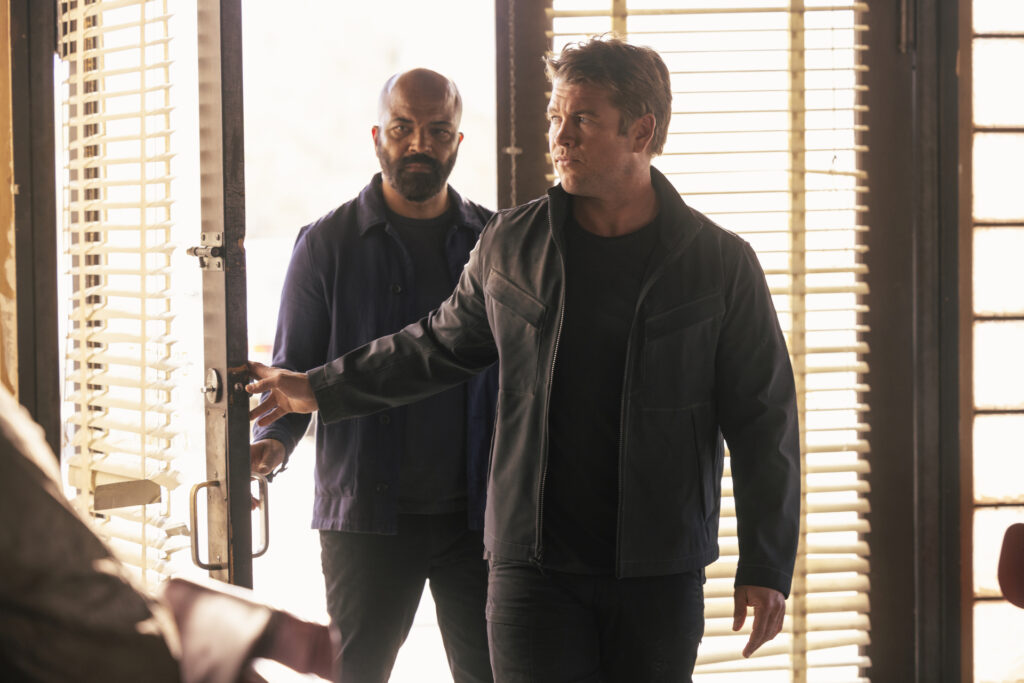
Plot Synopsis
According to WarnerMedia, here is the synopsis for Westworld Season 4 Episode 3—“Années Folles”.
You can never go back again. But if you do, bring a shovel.
WarnerMedia
Discussion
It should be noted that I have seen the first four of eight episodes ahead of release. Following the publication of this review, I have seen this current episode two or three times to properly get the feel of things.
Westworld Episode 403’s title, “Années Folles”, translates to “the crazy years” in French. This is the term to describe the 1920s’ decade, and that is where we are at this point in the series. I found this particular episode to be well-written, paving the way for big improvements from the previous episode and the season premiere. Once you see this, you might agree.
In terms of the episode’s narrative, Wrubel’s story editing is evident here, whereas, from the cinematic (motion picture) aspect, Allwarden and Ahad’s editing shows throughout the episode. The pacing here is as much a breeze as Season 4’s former two episodes. Three different arcs are weaved together so well, all complementing one another. It may not make complete sense for the time being. Although, it does provide some answers while still leaving itself open for other questions until the fourth episode.
Without spoiling too much, the three arcs of which I am speaking are as follows:
- Bernard Lowe (Jeffrey Wright) wakes up in his motel room after spending time in The Sublime. This was first teased in the Westworld Season 3 post-credits scene. He and Ashley Stubbs (Luke Hemsworth) then set out on a certain path in search of answers. After reaching the road’s end, they meet people who fight for a similar cause.
- Maeve Millay (Thandiwe Newton) and Caleb Nichols (Aaron Paul) find themselves in Delos’s new theme park, modeled after the 1920s. This was teased during the final scenes of the previous episode.
- Uwade (Nozipho McLean) and Caleb’s daughter, Frankie (Celeste Clark), stumbles upon a life-threatening discovery that could be the end of her family.
The episode is fast-paced and it may seem as if nothing much is occurring. However, allow me to direct you to the concept of the spiral. This might add a little more depth to your understanding of this episode.
Spiraling Through Time
According to the “Spirals, Ellipses, Metaphors, Anamorphoses” chapter of the late French philosopher/ psychoanalyst Anne Dufourmantelle’s critical text, In Praise of Risk, she spends a few pages discussing the concept of the spiral in connection to risk. She explains:
It is the spiral that … is the movement that seems best to describe our relation to the past and, even more, to trauma. … At once to return to a point where the past slips away, to cause it to be born or surge up anew. … To take the risk of the ellipse [or the spiral] is to make room in yourself for a vanishing point, a point of unconsciousness, of pure metaphor, whence meaning ceaselessly escapes, untangles itself from its own support, and slips away, both reproducing the model and driving a wedge into it, such that the model is ceaselessly reinvented, and so on.
Anne Dufourmantelle, ‘In Praise of Risk’
At the end of the spiral is something that is uncanny, which is a significant theme present throughout American Gothic narratives. However, before that point is reached, one must traverse the spiral through what Dufourmantelle refers to as the “metaphor”. From what she explains in her text, the metaphor is not only a literary device but is defined as “to transport”.
Metaphor invents within the space of language a movement, a dynamic, a tension between two terms that create new meanings. At the price, therefore, of repression.
[This procress] entails an art of substitution [and] invents a space of meaning that didn’t exist beforehand. … It establishes a link between two things, bringing them together, lifting a bit of meaning from the one in order to donate it to the other, and thus to imagine for both an augmented reality, a gentle astonishment. … Metaphor is a violent act. Violent because it’s irreversible. … Nonetheless, something will have been not repressed but lost.
Anne Dufourmantelle, ‘In Praise of Risk’
Applying the Spiral
While in Westworld Seasons 1 & 2, the Westworld theme parks were in the process of destruction. Its inhabitants either transferred their consciousnesses through “The Door” and into The Sublime, or they — i.e., a select few Hosts — survived and discovered themselves in the real world, that is, the humans’ world. Here, Westworld is destroyed and the surviving Hosts found themselves in what Dufourmantelle refers to as the “augmented reality”. Westworld Season 3, then, serves as that metaphor, the process of searching for new meaning. Moreover, Dolores Abernathy (Evan Rachel Wood) having sparked an uprising is the violent act that occurs in the climax.
In Season 4, we are now at the uncanny. Dufourmantelle describes this as a “disquieting familiarity”, that is, “the return in [a] foreign guise of something known and familiar … the ghostliness that has the effect of estranging everyday life: the return of the same as different (precisely because it returns)”. While we will see a little more of how this might apply to Millay in the next episode (hint, hint), so far, we have definitely seen this occur with Christina (Wood). We do not know how this came to be, but it seems as if Dolores has alienated herself from her life plagued by the past and is now living life as a human, or a humanlike figure.
What is indeed uncanny is the fact that this seemingly new character is waking up in bed and living the same routine (a spiral, perhaps?) that Dolores did in the Westworld pilot. She tends to her work, she goes about her day, she has someone to keep her company — her father or, now, Maya (Ariana DeBose) — and she has a new, yet familiar knight in shining armor (James Marsden).
At the end of the Westworld Season 3 finale, Lowe learned he was given the key to The Sublime and that Rehoboam was postponing the collapse of society, not necessarily preventing it. In this episode, we learn how that works in the character’s favor. However, I cannot speak too much on that until the next episode at the earliest.
What History Teaches Us About Spirals
When introducing the new theme park at the end of last week’s episode, Host William (Ed Harris) had stated, “We aren’t revisiting the past; we’re recreating it. Welcome to the Golden Age”.
Allan Lloyd-Smith’s critical literary text, American Gothic Fiction: An Introduction (2004), adds a little more weight to the term. He cites Sigmund Freud’s definition of “the uncanny” (Das Unheimliche in German): “[E]verything that ought to have remained … secret and hidden but has come to light”. On one hand, Lowe’s experiences in this episode best demonstrate spirals being made and metaphors being traversed. However, they may not necessarily be meeting an uncanny point. Something he learns about paths, possibilities, and the interventions thereof might be what lend a way to the uncanny.
On the other hand, like Christina, it is Millay and Nichols’s experiences in the new 1920s-themed park that best showcase what the uncanny is. Millay notices that life in this new park is uncanny. As she says, “Same old story. … We wait for history to repeat itself”. Here, she finds that this park is a “shabby imitation” of Westworld and its characters (and might I add that, in comparison, Season 2’s depiction of Shōgunworld is a more radical imitation of Westworld!).
At the beginning of the previous episode, Millay had difficulty freezing the motor functions of two Hosts at a politician’s home. In this new episode, we can confirm that something is absolutely uncanny about this new collection of 250+ Hosts.
My point is that the uncanny is here, as Millay and the Host William suggest. Uprisings are still happening and human rights issues still exist. We have witnessed the violent metaphor at work, and it was just a matter of time until we met the uncanny end… (As if the name of an establishment that some characters enter does not already foreshadow this.) Does that mean we are entering another spiral? That is what the writers mean by the “années folles”, or the crazy years, of our world. Everything horrific that has happened in the Wild West era of history happened in the 1920s and is currently happening in the 2020s.
Some Easter Eggs
A 1920s rendition of Billie Eilish’s hit pop song, “Bad Guy”, is played in the background when Millay and Nichols. If you are busy paying attention to the dialogue and the story, you might miss this. It might not mean much and does not seem to add anything to the plot, so this is not much of a spoiler. Although, you could consider the Charlotte Hale/ Dolores Abernathy (Tessa Thompson) character as the primary “bad guy” of Westworld‘s fourth season. Of course, this has been teased since the previous episode, so that is nothing new.
For a second or so, “DiLeo’s Ice Cream” is a store that appears within the same vicinity from the bar of which Millay and Nichols are patrons. This is not a spoiler, either, but is rather a neat reference to one of Westworld‘s four art directors of this episode, Chris DiLeo. Likewise, Jim Navarro (Josh Randall) — the deputy assistant attorney general for counter-terrorism introduced in the previous episode — could be a reference to assistant art director, Michael Navarro. (See the next section, The Crew of Westworld.)
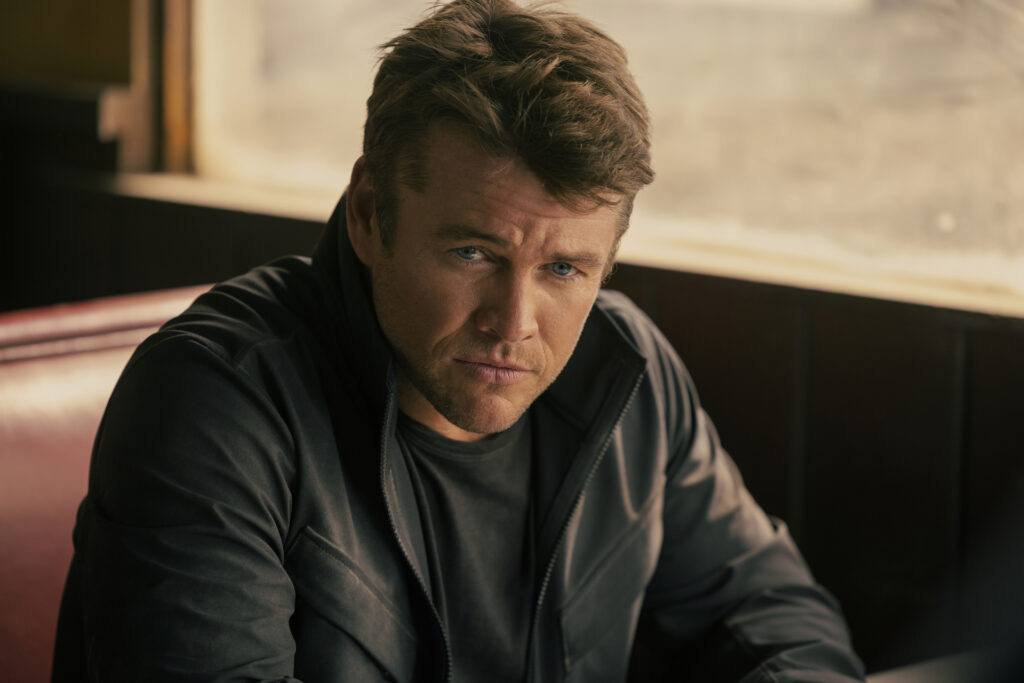
The Crew of Westworld
Westworld is created by Jonathan Nolan and Lisa Joy and is based on the film of the same name written by Michael Crichton.
Joy, Nolan, Ben Stephenson, Denise Thé, Alison Schapker, Richard J. Lewis, Athena Wickham, and J.J. Abrams serve as the executive producers. Matt Pitts and Mark Tobey serve as the co-executive producers; while Don Bensko, Jay Worth, and Noreen O’Toole serve as the producer. Kelly Calligan, Halle Phillips, Skye Wathen, Caleb Duffy, and Susan Ekins serve as the co-producers.
John Conroy serves as the director of photography. Amelia Allwarden serves as the editor of the episode. Iman Ahad serves as the assistant editor for the episode.
Suzanne Wrubel serves as the story editor. Alli Rock serves as a staff writer on the show.
Ramin Djawadi scores the music for the series. Benjamin Cook is the sound designer, while Christopher Kaller serves as the music editor. Trygge Toven and Sean O’Meara are the music supervisors.
Jon Carlos serves as the production designer. Jay Worth is the visual effects supervisor, while Elizabeth Castro serves as the VFX producer. Mark Robert Taylor serves as the supervising art director. Chris DiLeo, Amelia Brooke, Rachel Aguirre, and Rebekah Scheys are the art directors; while Michael Navarro, Elaine Jen, AJ Cisneros, and Jeanine A. Ringer are the assistant art directors.
Debra Beebe serves as costume designer. Margaret Robbs and Giorgia Tramontano serve as assistant costume designers.
Jose L. Zamora is the department head hairstylist. Michael Buonincontro and Lori Fenton serve as key hairstylists; Suzette Boozer, Michon Gonzales, Therese LeVasseur, Dorchelle Stafford, Lorena Zamora, and Sandra Avila-Valencia serve as additional hairstylists. Elisa Marsh is the department head make-up artist.
Andrew Hull, Daniel Jennings, Sally Thornton, James Bolenbaugh, C. Scott Baker, and David Chow serve as the set designers. Dan Caplan is the storyboard artist. Julie Ochipinti serves as the set decorator, while Ellen Reede Dorros and Jane Madden are the assistant set decorators.
John Papsidera and Kim Winther are the casting directors of Westworld. Maddalena Zuppetta serves as the casting assistant. Bill Dance and Sandi Allesi are the extras casting directors, while Terance Harris and Shayne Hartigan are the extras casting associates.
The Cast of Westworld
Evan Rachel Wood is credited as the protagonist of Westworld, Christina, once known as Dolores Abernathy.
Thandiwe Newton portrays Maeve Millay, while Aaron Paul portrays Caleb Nichols. Ed Harris portrays William, also known as the “Man in Black”.
Jeffrey Wright portrays Bernard Lowe, while James Marsden is credited as Theodore “Teddy” Flood. Tessa Thompson portrays Dolores Abernathy (previously Charlotte Hale), while Luke Hemsworth plays Ashley Stubbs.
Zahn McClarnon returns as Akecheta, a Native American Host of Westworld whose consciousness was uploaded into “The Sublime” prior to the events of the Westworld Season 3 premiere. Aurora Perrineau makes her introduction as a member of the cause. Daniel Wu appears as the leader of the cause.
Nozipho McLean plays Uwade, while Celeste Clark plays her and Caleb’s daughter, Frankie. Manny Montana plays Carver, an associate of Maeve and Caleb’s.
Cherise Boothe plays Temperance Maeve, while Nico Galán plays Temperance Hector/ Hector “Hecky” Armone. Hannah James plays Temperance Clementine.
Liza Weil plays Deborah, while Josh Randall plays Jim Navarro.
Sierra Swartz co-stars as Temperance Dolores, while James Joseph Pulido plays Temperance Teddy. Michele Boyd and Amanda Booth play Temperance Armistice and Temperance Angela, respectively.
Nathan People plays a deputy, while Gabriel Bonilla plays Gerald. Gilbert Chayrez-Chavarria plays the lead QA responder. Sue Cremin plays Ruby, a Road’s End Diner waitress. Anthony Molinari plays a local. Chris Rickett plays a suited G-man. Gabriel Sousa plays an alpha bro. Clayton Frey plays a body shop tech.
Alexander Ward, Marti Matulis, and Joseph Wilson play Drone Hosts. Alexandria Morrow and Lamonte Goode play a Behavior Lab couple. Paul-Mikel Williams plays Charlie.
Performances and Character Developments
I enjoyed Wright’s performance as Lowe in this episode. This is, for sure, an uncanny version of the character whom we have seen in Westworld‘s first two seasons and was developing throughout Season 3. The actor is so much different this time around and is not the same person we have seen in March’s The Batman. I admire his character’s optimism in this episode, or at least, he seems so sure of himself that the world is on the right track. To where, you might ask? I cannot give that away just yet, but you might like where his subplot is heading.
I also liked McLean’s dynamic with Clark as the mother/daughter duo of the season. The former performed in such a stressful scene that, upon my first watch, I felt fortunate as to how that turned out. Upon my second watch, however, maybe not so much. This scene did come off as a bit cliché in terms of suspense. As a child actor, Clark is going places, especially from what I have seen in the final scene. I am curious as to what her larger role will be in the second half of the season along with the development that will have to entail.
Paul’s performance as Nichols takes the spotlight at one point in the episode, as well. After he and Millay follow a frequency — “a song with no sound” teased by the vagabond in the previous episode — this is where it all hits the fan. I cannot say what exactly happens yet, except the fact that Paul does terrific here. In the next episode, it will all make sense, but that will be a while from now until I can discuss that.
Final Thoughts on This Week’s Westworld
“Années Folles” has a lot for me to discuss, despite coming up with fewer notes than “Well Enough Alone”. The reason behind this is that this third episode of Westworld Season 4 features action sequences that outweigh the plot details that hold substance.
It is important to pay attention to the editing, especially with scenes toward the final act as well as scenes involving Lowe. They might hold something concrete about spirals, metaphors, and the uncanny that we might need to know about the next episode. The Man in Black (Harris) needing a Host body — as we have learned in the previous episode — is one indication that these three are necessary. Additionally, pay attention to the maggots (fly larvae) and the flies in this episode. Flies are present throughout this season, and we might have seen a maggot coming out of the politician’s wife’s head in “Well Enough Alone”.
In some manner, “Années Folles” depicts itself as a Saw film: tension is built up to a point where we are trapped in moments of suspense and horror. Not only that but we will not comprehend what just happened until the next story/ narrative. In the case of Westworld, you will just have to wait for the next episode…
Westworld Season 4 is now airing on HBO!
Have you seen Nolan and Joy’s series? If so, then what are your thoughts on it so far? Let us know! For more Westworld updates as well as drama and science-fiction-related news and reviews, don’t forget to follow The Cinema Spot on Facebook, Twitter, and Instagram!
Managing editor & film and television critic with a Bachelor's of Arts in English Literature with a Writing Minor from the University of Guam. Currently in graduate school completing a Master's in English Literature.


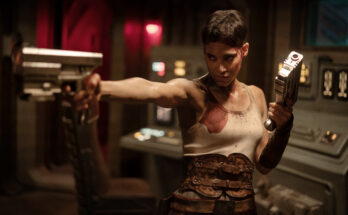
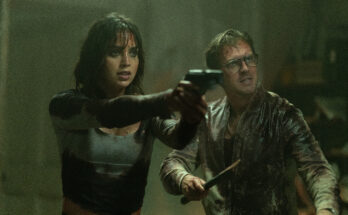
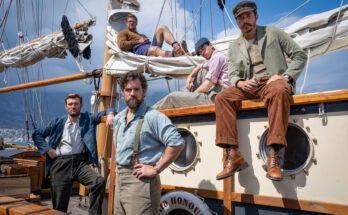
3 Comments on “‘Westworld’ Season 4 Episode 3 Non-Spoiler Review — “Années Folles””